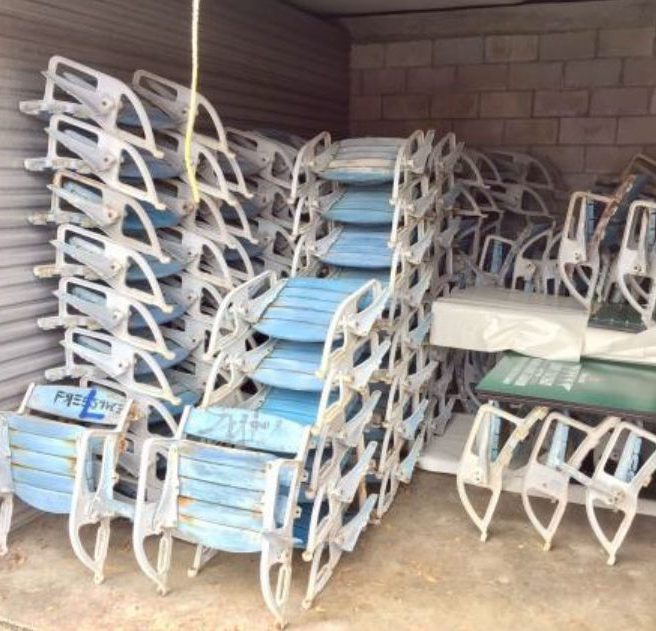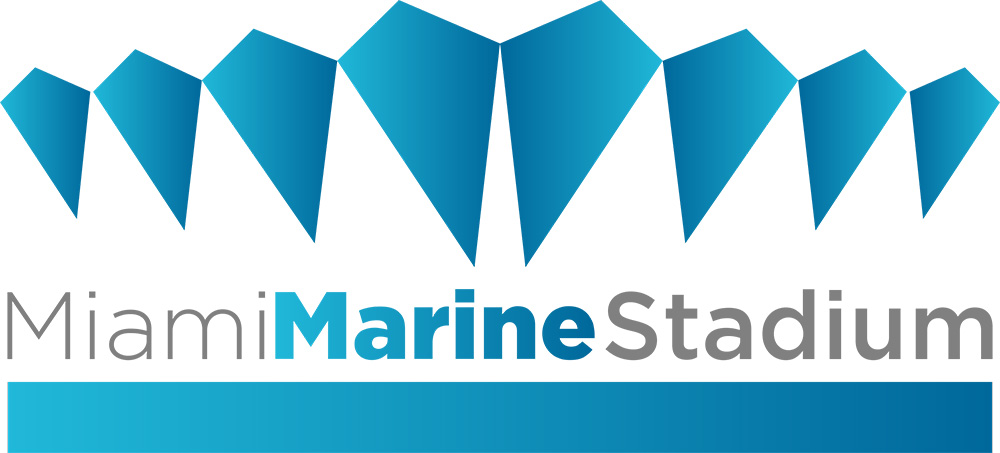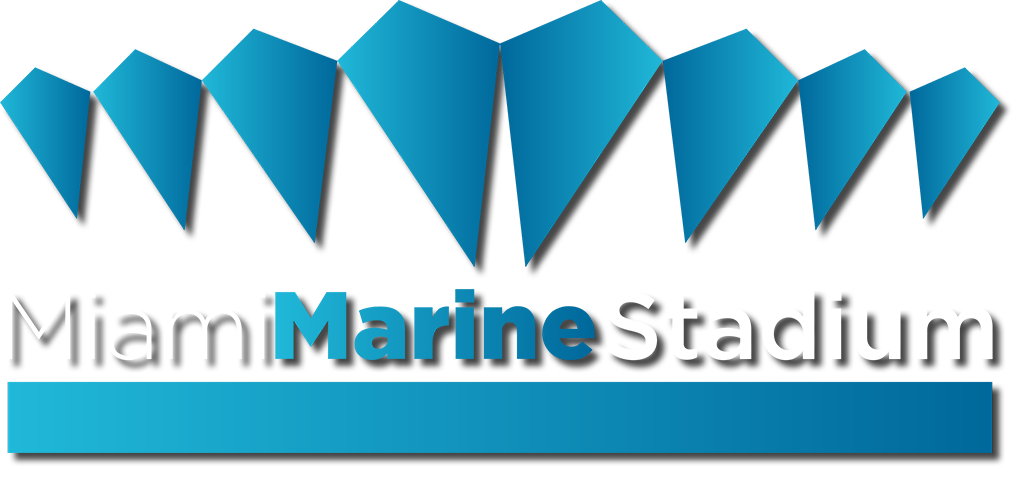Miami Marine Stadium
Our Herculean Effort
2008 – present
Restore Miami Marine Stadium is an informal advocacy group that was formed in 2015. Our sole mission is to see that the Miami Marine Stadium is renovated and operated successfully for the benefit of the public.
Friends of Miami Marine Stadium (FMMS) was the original advocacy group for the Stadium. It operated from 2008 to 2015. FMMS ceased to operate after its development plan was rejected by the Miami City Commission in 2015. We formed shortly thereafter and created a facebook page (2015) and a website (2019).
There is a lot of information on this website! Our timeline begins in 2008 and we have literally hundreds of photographs of the Marine Stadium-historic, current, new renderings, graffiti, even art photography. The News and Events section has links to the key articles and activities about the Stadium. There have been some terrific videos made about the Stadium and you can see them in our video section.
In 2019 we initiated a new project called IF SEATS COULD TALK. We took 60 original seats from the Marine Stadium and gave them to artists who repurposed them as new artwork and we displayed them at the Welcome Center of the Miami Design Preservation League. You can see these seats on our website-as well as artist statements and videos.
We hope you enjoy this website-and will feel motivated to join our effort to save and restore this spectacular landmark.
Don Worth, Co-Founder
Restore Miami Marine Stadium
LATEST UPDATE 9/6/2025
The City of Miami withdrew a Resolution to have the Miami City Commission designate the Oak View Group as operator of the Marine Stadium. This was done because the former CEO of Oak View, Tim Leiwecke, was recently indicted for potential bid rigging on a case 8 1/2 years ago. There is an alternative bidder to the RFP. City leaders stated that they intend to review the alternatives and return to City Commission with a plan.
Built in 1963 for watching boat racing, and featuring concerts on a floating stage, the Miami Marine Stadium provided Miami with a series of remarkable events from 1963 until 1992.
In addition to literally hundreds of boat races, rowing regattas, and other water based events, the Stadium featured concerts by The Who, Queen, Steppenwolf, Jimmy Buffett, Arthur Fiedler and the Boston Pops, Ray Charles, Benny Goodman, and many others. Other events included Fourth of July concerts, boxing and wrestling, Easter Sunrise services, and important political events such as a campaign rally in 1972 where singer Sammy Davis Jr. hugged Richard Nixon-a remarkable occurrence for the time. Even Elvis Presley shot a movie at the Stadium (Clambake). People who attended an event at the Marine Stadium often described the experience-being suspended above the water with a remarkable view of the Miami skyline-as “magical”.
Located on Virginia Key, just four miles from downtown Miami, the Marine Stadium is considered an architectural marvel, admired by fans of architecture around the world. Pioneered by architects by architects such as Le Corbusier, Eero Saarinen, and Luigi Nervi-its unique poured-in-place concrete construction is rarely used today. The Stadium was designed by architect Hilario Candela-who was 28 years old at the time of its construction, and engineer Jack Meyer. When built, its roof, which is a double sided row of hyperbolic parabloids, was considered the longest span of cantilevered concrete in the world.

The Miami Marine Stadium is not just a building-it’s is a landscape. A boat racing course was dredged out in front of the the structure. It is 6000’ long by 1,200’ wide with a spoil island at the end, that once marked three different boat racing courses. The Basin is designed as an elongated oval and was modelled after the Circus Maximus in Rome, which is where the chariot races were held. The Miami Marine Stadium and Basin are now listed on the National Register of Historic Places (2018) and were designated historic by the City of Miami (2008). The architectural significance of the Stadium has been recognized by the National Trust for Historic Preservation, the World Monuments Fund, and The Getty Foundation.
For updates and to stay in the loop, please visit our facebook page.

In 1992, the City of Miami shuttered the Marine Stadium after Hurricane Andrew stating that the Stadium was damaged by the Hurricane and must be demolished. An engineering report done at that time demonstrated that the Stadium actually sustained no damage. The Marine Stadium sat for years, as various redevelopment schemes were proposed and discarded. In 2008 a new group, Friends of Miami Marine Stadium formed under the umbrella of Dade Heritage Trust to advocate for restoration of the Marine Stadium. These advocacy efforts eventually compelled the City of Miami to take over the project and begin the process of restoration. For updates on current status, please visit our Facebook page.

Seat Art
Approximately 100 seats that were removed from Miami Marine Stadium as part of Heineken’s 2016 “Save Your Seat” campaign will be distributed to local artists who are willing to use the found objects to create artwork that celebrates the stadium. Their work will be featured in an online gallery created by the National Trust for Historic Preservation and possibly featured at TBD community events. The purpose of this project is to generate awareness of Miami Marine Stadium, its cultural significance to Miami, and its ongoing restoration.
This campaign is presented by the National Trust for Historic Preservation, a privately funded nonprofit organization that works to save America’s historic places, and Dade Heritage Trust, whose mission is to preserve Miami-Dade County’s architectural, environmental, and cultural heritage through preservation, education and advocacy efforts.



